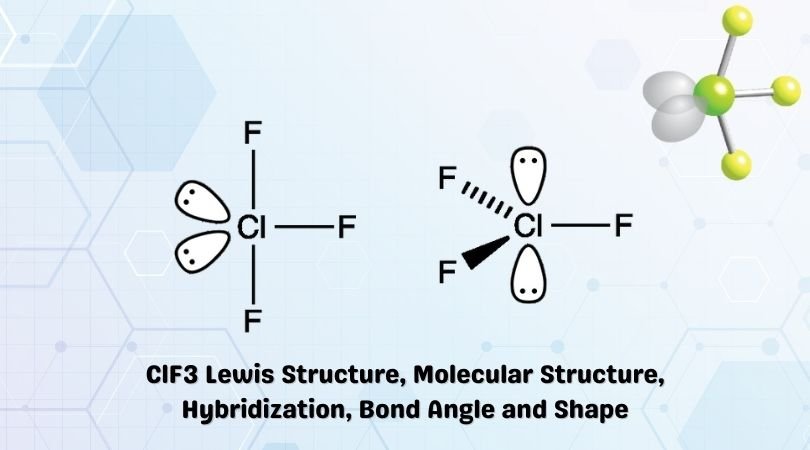The chemical formula OCl2 represents Oxygen Dichloride. It is an organic compound that exists as a brown-yellow gas and is also soluble in water and organic solvents.
It is a powerful oxidizing and chlorinating agent due to it being an anhydride of Hypochlorous acid. It is prepared by treating Chlorine gas with hydrated Sodium Carbonate at middling temperatures of about 30°C.
It exists in an equilibrium state alongside HOCl. This suggests that OCl2 plays an active role in HOCl’s reactions with alkenes, aromatic compounds, and the chlorination of water. It also reacts with metals and inorganic compounds to form their halides.
The compound is said to be explosive and shock-sensitive in liquid form. It has the following properties:
| Name of the molecule | Oxygen Dichloride (OCl2) |
| No. of valence electrons | 6 + (2 x 7) = 22 valence electrons |
| Hybridization of central atom | sp3 |
| Bond Angles | 110.9° |
| Molecular Geometry of OCl2 | Bent Molecular Geometry |
Contents
OCl2 Valence Electrons
Being in group 7 of the periodic table, Chlorine has seven valence electrons with a valency of -1. Chlorine’s electronic configuration is given by [Ne]3s23p5. The possibility of electrons in its d shell makes it hypervalent.
Therefore, the two Chlorine atoms contribute 7 x 2 = 14 valence electrons.
Being in group 6 of the periodic table, Oxygen has six valence electrons and has a valency of -2. Oxygen’s electronic configuration is 1s22s22p4.
Therefore, a single Oxygen atom contributes 6 x 1 = 6 valence electrons.
Thus, the total number of valence electrons in Oxygen dichloride [OCl2] is given by:
6[O] + 14[Cl] = 20 valence electrons.
OCl2 Lewis Structure
Oxygen is the least electronegative in this case and therefore, is placed in the center of the skeletal structure. The two Chlorine atoms are placed on either side of the Oxygen atom.

We start by forming covalent bonds between Oxygen and Chlorine as shown in the figure. This leaves us with 16 valence electrons. The remaining valence electrons are filled in the outermost atoms, gradually moving inward. We start with the two outer Chlorine atoms. This is done per the octet rule.

The 4 remaining valence electrons act as lone pairs and attach themselves to Oxygen as shown in the figure. This is the final Lewis structure for OCl2.

The Chlorine atoms have 8 valence electrons on each. The oxygen atom in the center also has 8 valence electrons. The arrangement satisfies the octet rule and is therefore stable.
OCl2 Hybridization
Oxygen Dichloride comprises an Oxygen atom surrounded by two Chlorine atoms on either side. This necessitates a covalent bond O-Cl bond.
As such there are two covalent bonds and two lone pairs of electrons hanging onto the Oxygen atom on either side. This tells us that there are 4 electron domains present. An easy method to determine the hybridization of an atom in an element is to observe the number of its electron regions or electron domains. Lone pairs and covalent bonds with other atoms contribute to being electron domains.
Therefore, the hybridization of OCl2 is sp3.
OCl2 Bond Angle
According to the VSEPR theory, the Chlorine atoms will push as far away from each other as possible. This creates an angular separation. The presence of lone electron pairs on Oxygen also affects the bond angle, creating repulsion.

This results in a bond angle of 110.9°.
OCl2 Molecular Geometry
By looking at the OCl2 Lewis structure shown above, we understand that there are two Chlorine atoms attached to the central Oxygen atom. We also see that there are two lone pairs of electrons on the central Oxygen atom.
Based on the VSEPR Theory (Valence Shell Electron Pair Repulsion Theory), the electron clouds on atoms and lone pairs of electrons around the central Oxygen atom will repel each other.
This results in them being pushed apart giving a Bent Molecular Geometry.
CONCLUDING REMARKS
Let’s quickly summarize the salient features of OCl2
- OCl2 consists of one central Oxygen atom and two Chlorine atoms surrounding it.
- In its most stable state, Oxygen acts as the central atom due to it being less electronegative than Chlorine.
- The Oxygen atom has two covalent bonds with Chlorine and two lone pairs attached to it.
- The hybridization of the central atom Oxygen is sp3 due to the presence of 4 electron domains.
- OCl2 has a bent molecular structure with bond angles of 110.9°





